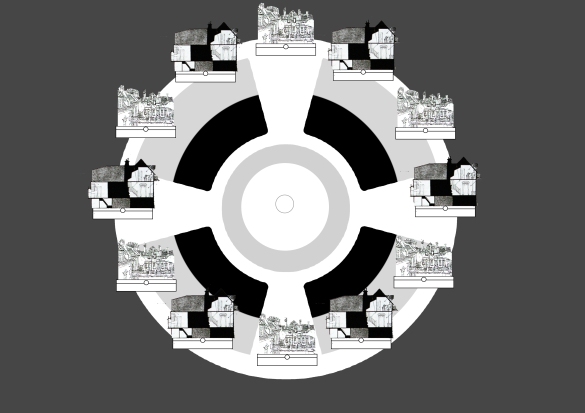As I was starting to plot down some survey drawings the other day, it occurred to me that I have no idea what measurement unit to use for my technical drawings. It seems strange to use the metric or imperial system when my design’s destination is a virtual space. I know character designers often use the heads of their characters as measurement, but I don’t know how to do this without making it an effort for the prospective modeler. Since modeling software have measurement helplines within normal measurement systems it seems odd to create my own.
Also, I’d have to use the same character to create a consistency throughout the models. In my head it seems perfectly easy, but from a technical perspective I can imagine the trouble it might cause. In example, what if I save the character in the wrong size, and the model come back in the wrong size? I suppose this could always be altered, as it’s not a physical build, but it does seem like a whole lot of extra work that could easily be avoided.
On About.com, the question of which measurement to use is answered by the following:
The easiest answer is “any unit you want.” Because you’re working in a virtual space, there’s no need to define measurements by standard units; you wouldn’t really make a road that took up three miles of virtual space. Instead you’d make a road where every mile represented was just as long as 5,280 of that child’s toy, set end to end. What matters isn’t the specific measurement; what matters is relative scale.
Souce
And finishes with:
Work out whatever method fits your animation style and workflow best. Otherwise you may end up creating objects that are just far off enough in size to be jarring and ruin your animation, rather than fitting together seamlessly. It can be especially difficult to guess when you’re working with perspectives in a 2D or 2.5D space.
I suppose, for me, it would make more sense to use the metric or imperial system to a set scale, as this is something we’ve done throughout the past years of our course. Using one of my characters as the standard measurement would make perfect sense to me, and would be more convenient if her design changed, as the environment would follow her design. On the other hand, if I was handed a set of technical drawings and told to build it with a selected character as the measurement unit, I might get confused. Actually, to be honest I can’t imagine struggling to understand it, but using the metric or imperial system just seems like a safer bet.









